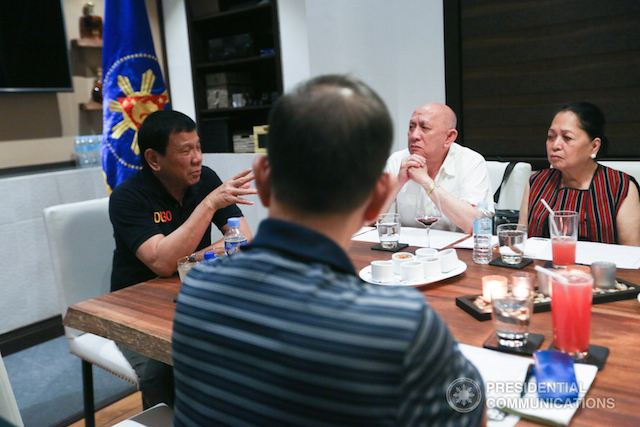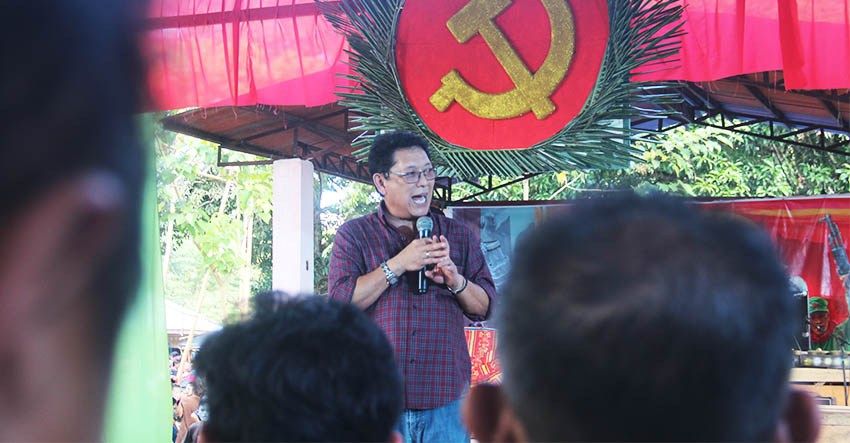The B’laan people are one of 18 Lumad indigenous groups living in the southern Philippine island of Mindanao. With a population of around 450,000, they are largely concentrated in the provinces of South Cotabato, Davao del Sur and Sultan Kudarat. Most of them are still engaged in subsistence farming, with corn and rice being the main produce. Originally, the B’laans lived on the fertile plains but were slowly forced to move to the mountains when the government started bringing in majority Cebuanos and Ilonggos from the central Philippine islands during the early 1900s.

South Cotabato is known as the food basket of Mindanao because of its fertile lands and diverse agricultural products. In 2016, South Cotabato was the third most economically competitive province in the Philippines. The province’s population is a mixture of descendants of Cebuano and Ilonggo settlers from the Visayas area, Moslem peoples, and Lumad peoples belonging to the B’laan, Manobo and T’boli groups.
The province is blessed with bountiful mineral resources. Tampakan town in South Cotabato has one of the largest undeveloped copper and gold deposits in Southeast Asia. A large number of B’laans live in the mountainous parts of the town, and they consider Mount Bulol as a sacred mountain for their tribe. When one visits the town, one is struck by how quiet and serene the municipality is.
Underneath this seemingly peaceful exterior, however, is the fact that Tampakan is the battleground of a war that has raged for decades.
Checkered past
The Tampakan Copper-Gold Mine Project in the uplands of the town has changed hands several times since exploration in the area commenced. In 1990, the Western Mining Company (WMC) started exploring around the Tampakan highlands after an invitation from the Tampakan Group of Companies, a consortium of small-scale miners based in the province. Their areas of interest were in the ancestral lands of the indigenous B’laan people. In 1995, two months after the enactment of Republic Act 7492, or the Mining Act, WMC was granted a financial and technical assistance agreement (FTAA) by the Philippine government. The FTAA initially covered an area of 99,387 hectares located in four provinces, four municipalities and nine barangays. In line with the provisions of the Mining Act, the FTAA gave WMC the right to explore and commercially exploit, as well as completely own, the land granted to it for 50 years.

In 2001, WMC transferred its FTAA to locally-owned Sagittarius Mines, Inc. (SMI). The following year, Australian company Indophil Resources bought shares of the mine project. In 2007, Swiss-based Xstrata Copper gained 62.5% controlling equity interest of the project as well as management of SMI. In 2013, the company Glencore merged with Xstrata, creating the fourth largest natural resources corporation in the world. Glencore Xstrata, as the new company was called, gained control of the Tampakan project as well. In the middle of 2015, however, Glencore Xstrata completed the sale of its interests in the Tampakan project to the local Alcantara group through its subsidiary Alsons Prime Investment Corp. (ACIP), which by then also had controlling interest over Indophil. The sale facilitated the return of the Tampakan project, as well as management of SMI, into Filipino hands.
Public-private partnership
From the onset, the Philippine government has given, and is obliged to give its assistance to ensure the operation of the Tampakan project. The ease by which WMC obtained its FTAA just two months after the legislation of the Mining Act in 1995, despite the lack of consent from the affected B’laan people in the mining site, is a testament to the willingness of the government to give necessary permits to mining companies like the WMC.
In 1997, the La Bugal-B’laan Tribal Association of Columbio, Sultan Kudarat challenged the constitutionality of the Mining Act, asserting that its provisions regarding 100% foreign ownership of land as well as other provisions of the said law are going against the 1987 Philippine Constitution. In 27 January 2004, the Philippine Supreme Court (SC) declared the Mining Act unconstitutional, thereby voiding the FTAA issued to WMC and other foreign mining companies.

Presidential Museum and Library
Upon hearing of the SC decision regarding the Mining Act’s unconstitutionality, former House Speaker Jose De Venecia “decided to mount a strong campaign to get the Supreme Court to reverse itself.” De Venecia was speaker of the House of Representatives when the Mining Act was passed. The law’s primary sponsor in 1995 was then-Senator Gloria Macapagal Arroyo, who was the country’s president when the SC had reversed its own decision in 2004.
The original FTAA text states that the national government must “ensure the timely issuance of necessary permits and similar authorizing documents and lifting of impending regulations or reservations for the use of surface of the contract area.” An apparent case of collusion between the government and SMI resulted in the issuance of the mining company’s environmental compliance certificate (ECC), a document necessary for the mining operations to move from exploration to extraction.
In a feasibility study, SMI shareholder Indophil stated that the only viable and most profitable way for the company to extract copper and gold from the ground was through open pit mining. In response to this, the South Cotabato provincial government passed the Environment Code explicitly banning open-pit mining within the province’s territory in June 2010. Prior to this, several municipal councils had already banned SMI from operating in their areas of jurisdiction. In January 2012, the Department of Environment and Natural Resources denied SMI’s application for an Environmental Compliance Certificate (ECC), citing the South Cotabato Environmental Code as basis.
No cases were filed by SMI in court to challenge the local Environment Code. Instead, it brought its case to then-President Benigno Aquino III. By 6 July 2012, Aquino issued Executive Order (EO) 79, which gave the national government the authority to decide on the issuance of permits for mining companies. On 4 February 2013, the Office of the President through Executive Secretary Pacquito Ochoa, Jr. released a memorandum criticizing the DENR for its failure to issue SMI’s ECC and directing it to immediately grant the company’s request. By the end of the month SMI had its ECC.

In another case of government power and influence wielded to clear the way for these big miners, the three municipal mayors of Kiblawan, Tampakan and Colombio signed a memorandum of agreement (MOA) in 2008 with SMI to create Task Force KITACO. The MOA tasked the three municipal governments with recruitment of paramilitary forces into the Citizen’s Armed Forces Geographical Units (CAFGU) to serve as investment defense forces for the Tampakan mine while SMI provides the funds for equipping, training and provisioning of recruits.
Corresponding actions and decisions of SMI, its owners, the national government, and several local government officials has had a profound, and mostly negative, impact on the lives of the B’laan people in the area.
Blood-stained gold
In 1995, WMC was granted its FTAA for the Tampakan project without consulting the B’laan people to be affected by the operation. WMC submitted a list of signatures of people supposedly giving their consent to the project one month after the granting of the FTAA, thus violating the law which stipulates that the FPIC must be acquired by the company prior to the issuance of any mining permit. In addition, many of those who signed lamented the fact that they were not properly informed as to the method WMC will use in extracting mineral resources as well as the possible effects of mining operations on their ancestral lands and ways of life.
The FTAA originally covered over 90,000 hectares of B’laan ancestral lands. If the exploration advances to the extraction phase, the open pit mine will cover 10,000 hectares of land, the size of 17,000 basketball courts in width and a depth of a 160-storey building. 5000 people living in the mine site will have to be resettled, endangering the livelihood and culture of the B’laan people, whose traditions and way of life are intricately connected to the land.
Showing its resolve to claim the ancestral lands of the B’laan for its mining operations, the SMI handpicked representatives from the B’laan people and created resettlement committees that did not represent the majority of the affected people. By early 2012, SMI started posting notices around the mine site that it will start the registration process for those who wish to avail of compensation for resettling outside the mining site. The notice was written in Bisaya, a language not many of the B’laan people understand (aside from the fact that many of the B’laan people do not know how to read). The notice also stipulated that those who do not avail of this registration process will not receive anything from the company. Many of the B’laans did not register for resettlement and instead took action against the company’s resettlement policy.

The Philippine Army and the Task Force KITACO set up several military detachments in the area to protect the mine site as well as maintain peace and order in the area. In fact, these military and paramilitary groups supported by SMI routinely targeted the indigenous B’laan for harassment and intimidation.
“The military has become a tool of SMI to force us to agree to the company’s wishes,” attested B’laan leader Minda Dalinan, secretary general of Kaluhhamin (Kahugpongan sa mga Lumad sa Halayong-Habagatang Mindanao or Unity of Indigenous Peoples in Far-Southern Mindanao).
“Instead of protecting us, the military and SMI have blood on their hands. They are responsible for killing many of my people,” she added.

At least 10 B’laan people have become victims of extrajudicial killings in connection to the SMI-Xstrata mining operation in Tampakan. All of the killings were done allegedly by the Philippine military, the paramilitary CAFGU and Task Force KITACO. On 18 October 2012, Juvy Capion, 27, and her two sons Jordan, 13, and Janjan, 8, were allegedly killed by members of the Philippine Army’s 19th Infantry Battalion (IB) in their house in the Bong Mal community. Juvy, who was pregnant at the time, was the wife of B’laan anti-mining resistance leader Daguil Capion and was also a vocal critic and leader of the movement against the Tampakan project. The army denied that Juvy and her children were victims of extrajudicial killings and instead called the incident a legitimate encounter between state security forces and tagged the Capions as armed resistance fighters.
In another incident, men in uniform shot and killed Fulong Anting Freay, 60, and his son Victor, 16, on 23 August 2013. The elder Freay is a fulong–a tribal chieftain–and is considered one of the most respected elders in the Bong Mal B’laan community. Many of his clan members are involved in the anti-mining resistance movement of the B’laans. One of Freay’s wives is also a sister of Capion. Freay’s body was riddled with 17 bullets while his son received 18.
Indigenous resistance
These violations of indigenous rights, however, have not gone unchallenged.
At the onset, the B’laans have opposed the proposed mining operation in Tampakan. In 1997, 7000 people joined a caravan against the approval of the WMC’s FTAA for the mine project. The La Bulol-B’laan Tribal Association also challenged in court the validity of WMC’s permit as well as the constitutionality of the Mining Act of 1995.
In December 2010, hundreds of B’laans trooped to the national capital of Manila to demand government action regarding the Tampakan mine project in the first Lakbayan of Mindanao Indigenous Peoples. In October 2011, hundreds of people assembled to form Kalgad, an organization of B’laan people living inside the projected mine site. Kalgad members joined the second Lakbayan in December 2011, highlighting their continued resistance to the SMI-Xstrata mining activities. In March 2012, the residents of Bong Mal barricaded all major roads leading to SMI’s campsite as a sign of protest against the company’s plans to resettle the indigenous residents of the area.
In October 2016, about 300 B’laan people again joined the Lakbayan to the capitol to pressure the government to junk the Mining Act and revoke SMI’s mining permit. On 1 December 2016, hundreds of B’laans were camped out in the Mindanao State University campus in General Santos City in protest of the continuing SMI operations.

Frustrated with government’s selling out of their ancestral lands Daguil Capion and dozens of B’laan warriors armed themselves and declared a red pangayaw (tribal war) against SMI and government forces for violating the rights of the B’laan people. Capion was a former community relations officer of SMI who became disenchanted with the company after witnessing how the company repeatedly abused his fellow B’laans.
“If SMI or its supporters have been telling the outside world that everything is smooth in the mines development site, that’s not true,” he said in an interview in the same hut where his wife and two children would later die.
Capion and his people were responsible for a series of attacks against SMI facilities and personnel between June and July 2012. This includes the killing of an SMI security consultant and a police escort inside the SMI mining tenement on 20 June 2012. This attack came after another offensive his forces made on June 17 that killed an SMI security guard.
Supporting the call
Church officials, human rights activists, indigenous rights advocates, environmentalists and government officials have also joined the B’laans in the fight against SMI and the Tampakan project. Alliances and organizations such as the Alyansa Tigil Mina, Tampakan Forum, Socskargends Agenda, and Panalipdan Tampakan have been formed to combat SMI and national government policies on mining that adversely affect the B’laans. These alliances also provided much needed support to the Lumad as well as exerted additional pressure on government units and provided machinery for the anti-Tampakan mining campaign.
In 2006, the municipal council of Buluan in Maguindanao province declared its opposition to SMI’s operations. In June 2010, the provincial government of South Cotabato passed its Environment Code that banned open-pit mining within its provincial boundaries, effectively banning SMI’s operations until this Environmental Code was circumvented by the national government. In August 2011, the Matanao municipal council also joined the fight against the Tampakan project by declaring its opposition against SMI’s continued operations. On 30 June 2013, more than 200,000 people had signed a petition to stop the SMI from mining in Tampakan.
In addition, SMI and the Tampakan mine project have also come under fire from the communist New People’s Army (NPA), which in 2013 reiterated its stand against foreign large-scale mining and launched a series of tactical offensives against the company. This has put additional pressure on SMI as well contributed to the violence in the area to a certain extent.
We will kick them out
Due to the strong opposition as well as the legal hurdles that Glencore Xstrata faced in relation to Tampakan, the company gave up its control of the mining project to local company Alsons Prime Investment Corporation (APIC) in mid-2015. Despite the controversies surrounding the project, SMI executives vowed to continue its plans of getting the Tampakan mine project operational by 2018.
The company faces an uphill battle however, as the B’laan people continue to resist the project both legally and with arms. In October 2016, 500 B’laans again marched to the capitol alongside thousands of other Indigenous Peoples in the country to protest the continuing exploration in the Tampakan area, and support for the B’laans and against the mine project has continued to pour in. Additionally, the NPA commitment to drive out large-scale foreign mining companies from Philippine soil stands despite on-going peace negotiations between the National Democratic Front of the Philippines (NDFP), an umbrella organization of which the NPA is a member, and the Philippine government.
Furthermore, opponents of the project have found a new ally in the person of the Environment Secretary Gina Lopez, known as a staunch environmentalist and anti-large scale mining advocate.
“I don’t really like Tampakan at all. There will be no Tampakan mine operations under my term,” Lopez said in an interview.
True to her word, by August 2016 SMI’s ECC was suspended along with several other companies in a nationwide crackdown launched by Lopez against erring mining companies who failed to meet environmental, health and social standards.
Kaluhhamin’s Dalinan lauded Lopez’s move but said this was but a step in the right direction.
“My people have suffered enough because of this project. It is time to kick SMI out of our lands for good,” she asserted.
The original article was first published by the Mindanao Interfaith Institute on Lumad Studies with the support of the European Union and Healing the Hurt project of the Rural Missionaries of the Philippines-Northern Mindanao Region.
Mark Ambay III is Research and Information Officer of the International Indigenous Peoples Movement for Self Determination and Liberation (IPMSDL). He is also associated with KATRIBU National Alliance of Indigenous Peoples and Assert Socio-Economic Initiatives Network of the Philippines. Read more of his work on his blog and follow him on Facebook and Twitter.
The post Blood and Gold: Tampakan and the B’laan resistance appeared first on Manila Today.
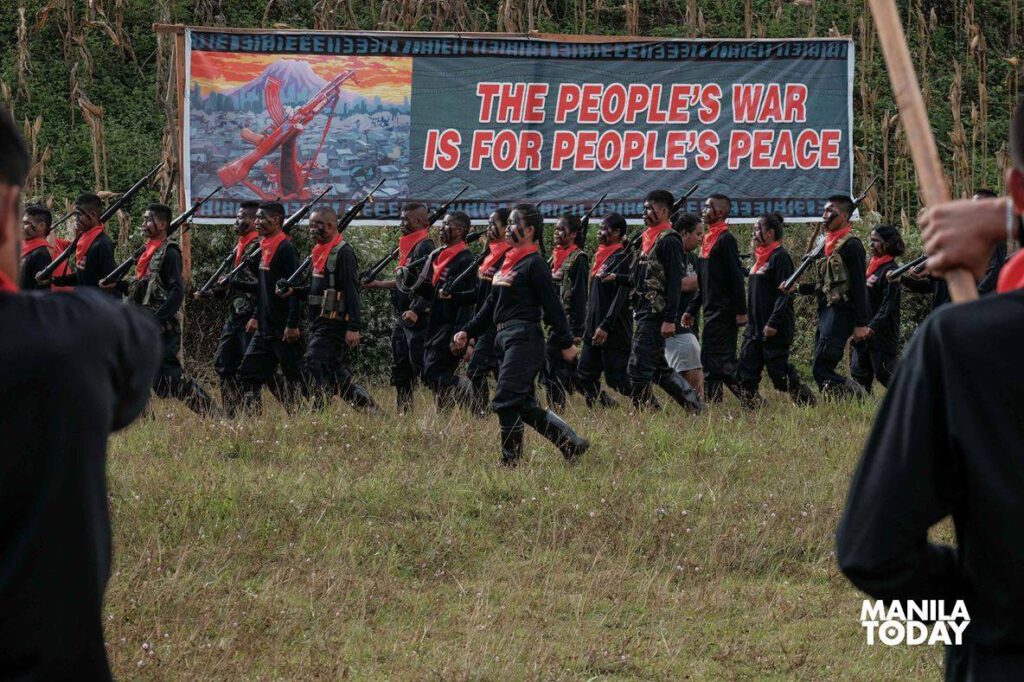
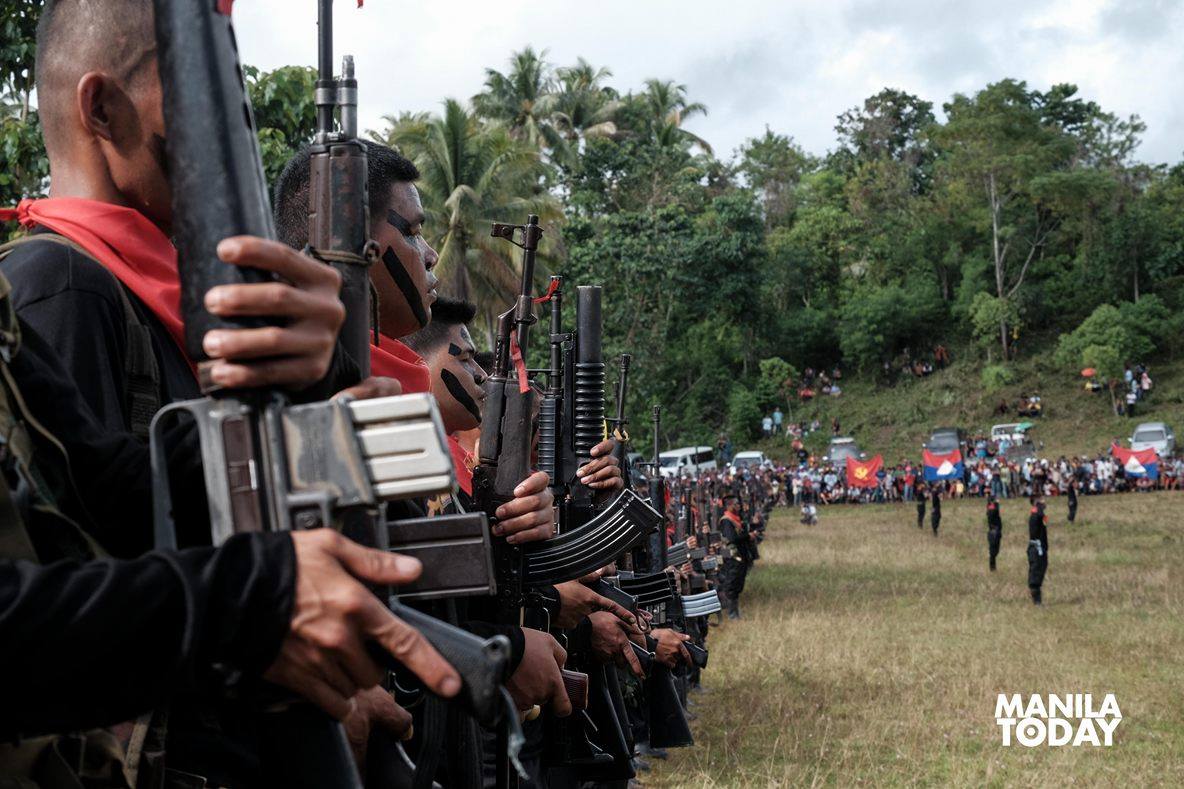
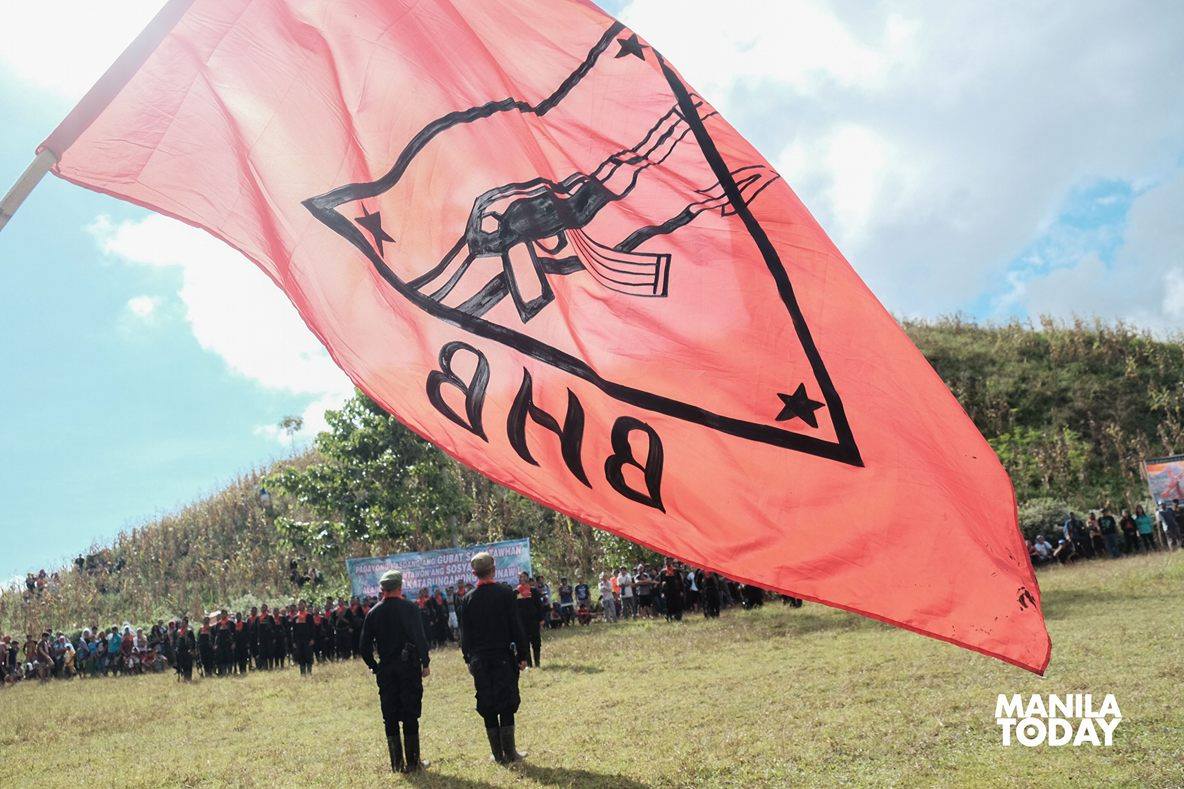
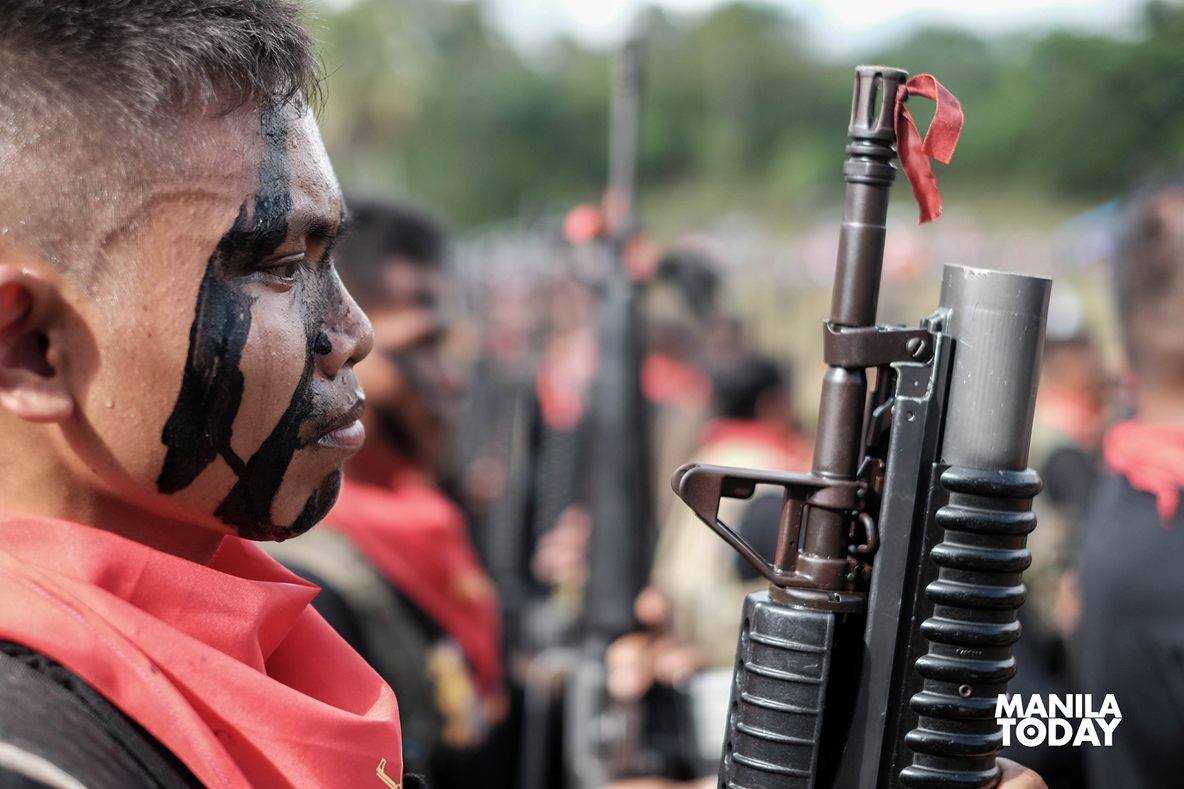
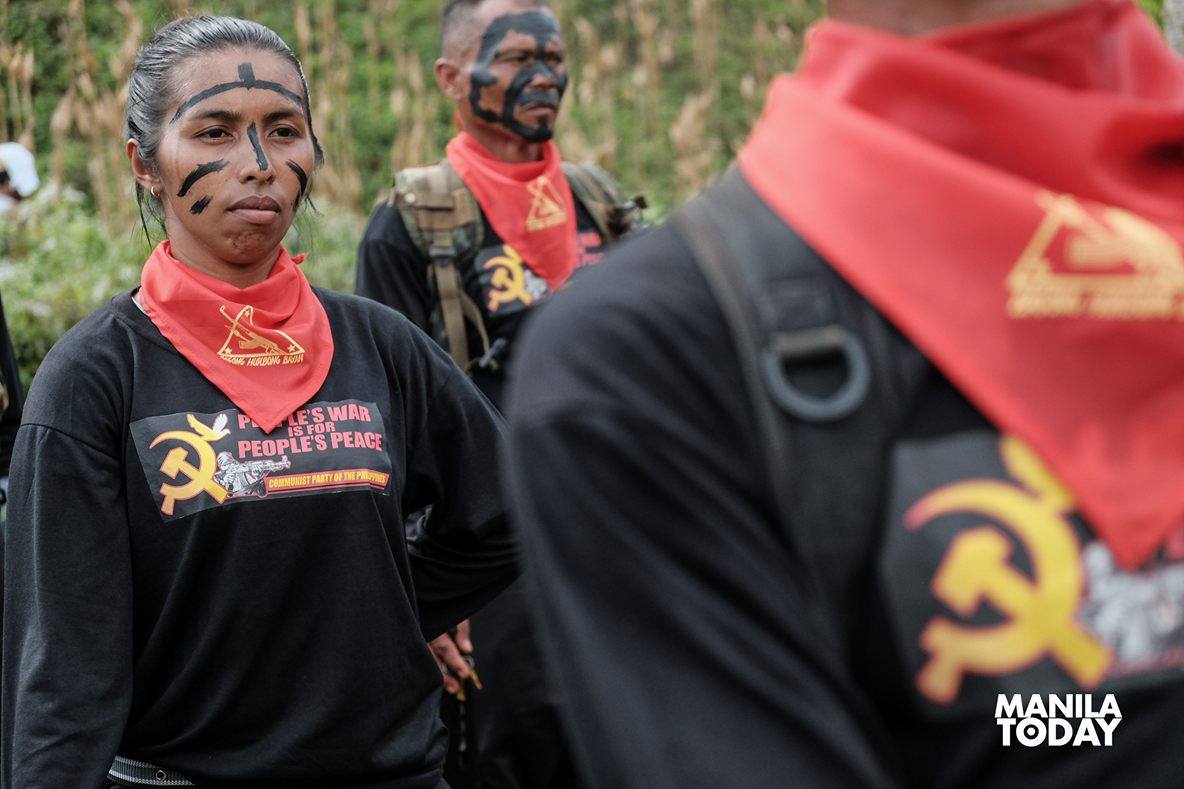





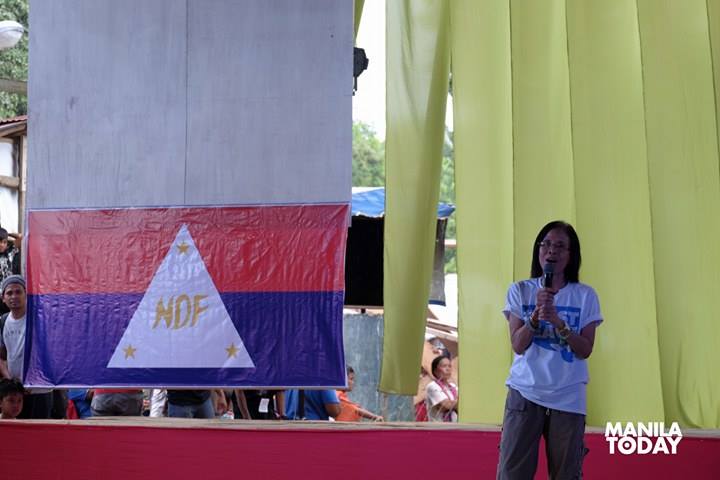


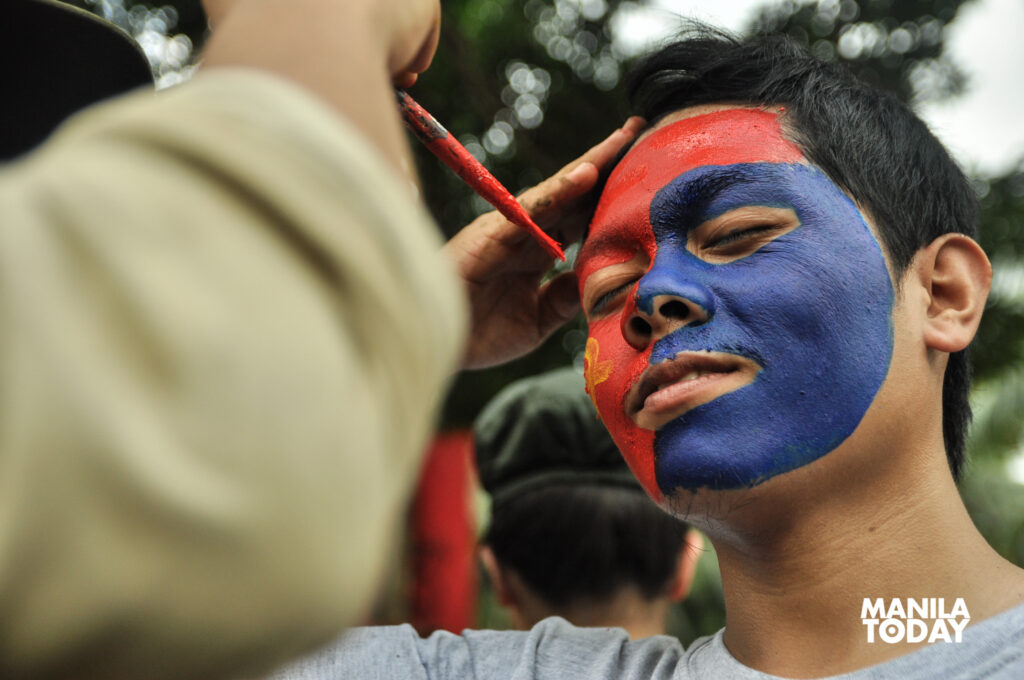

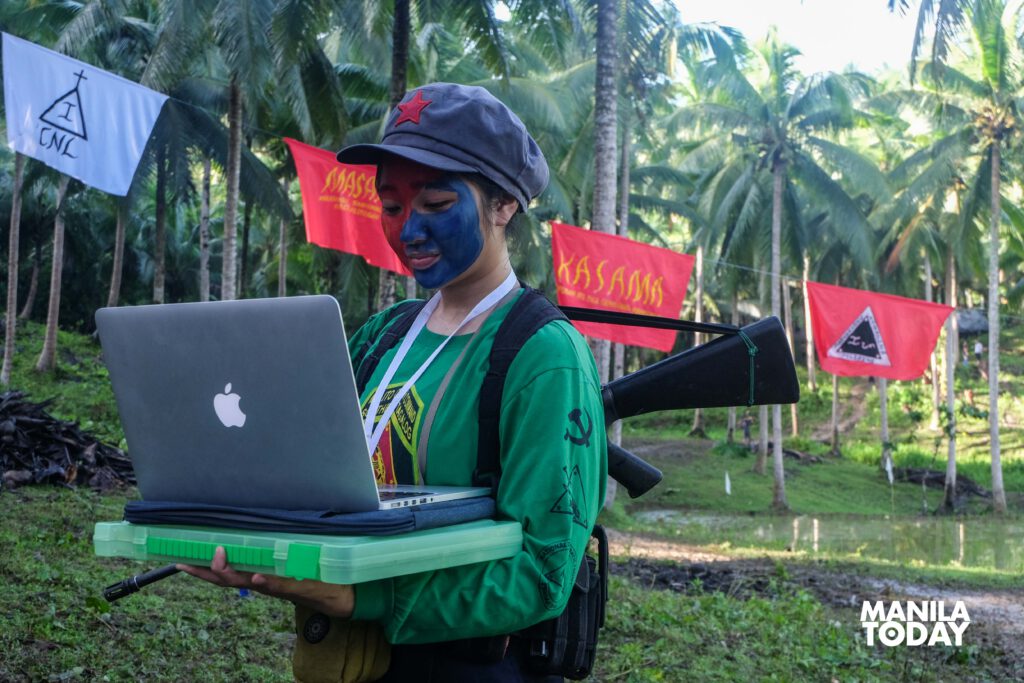

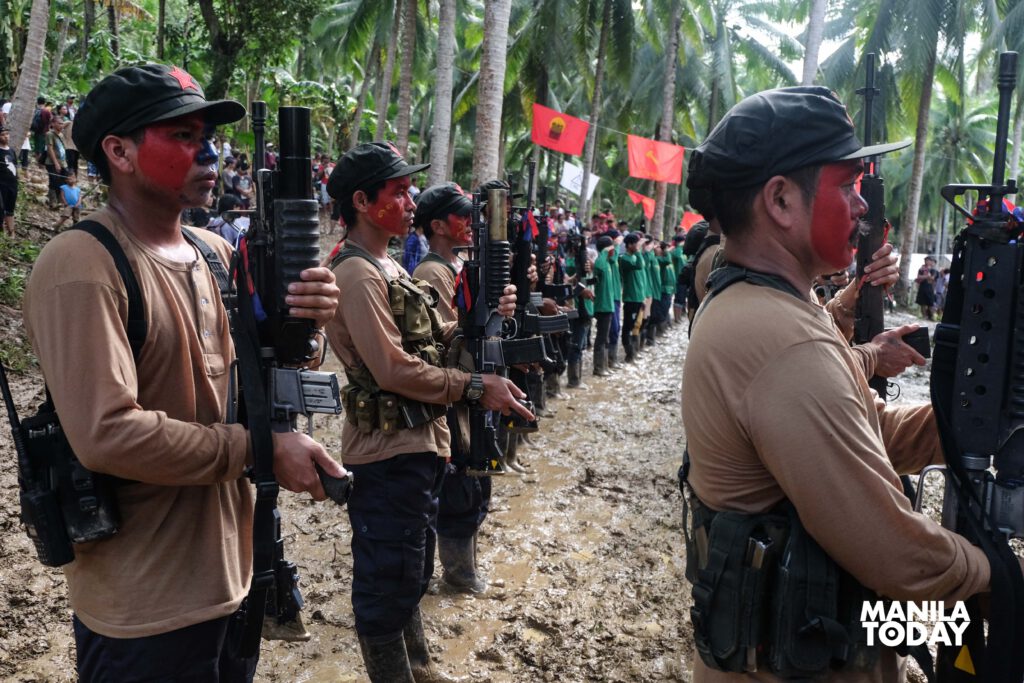
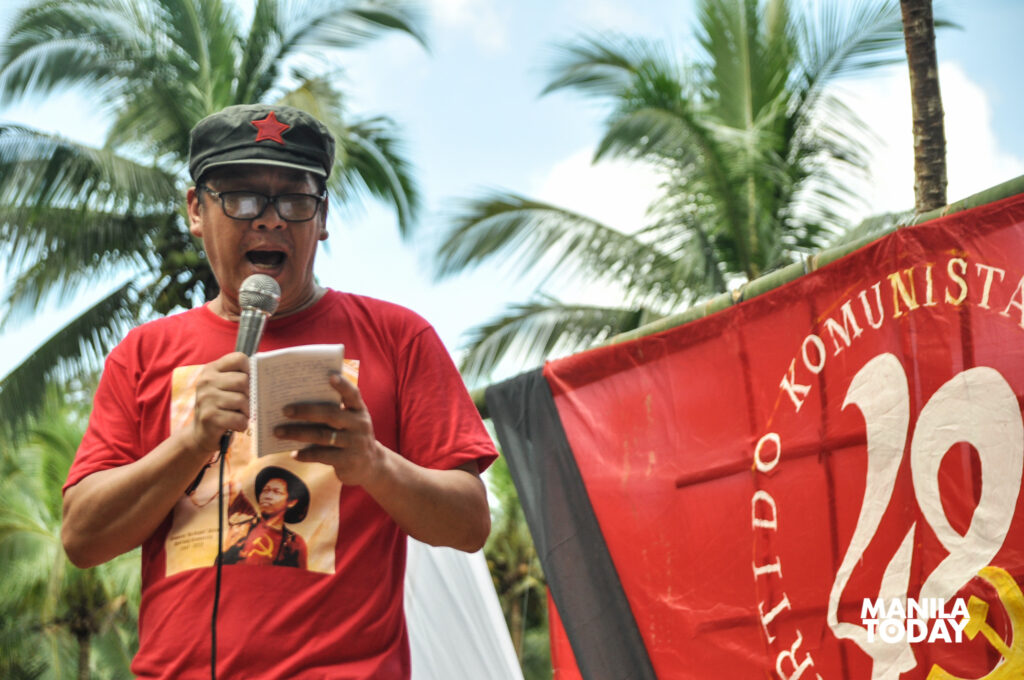
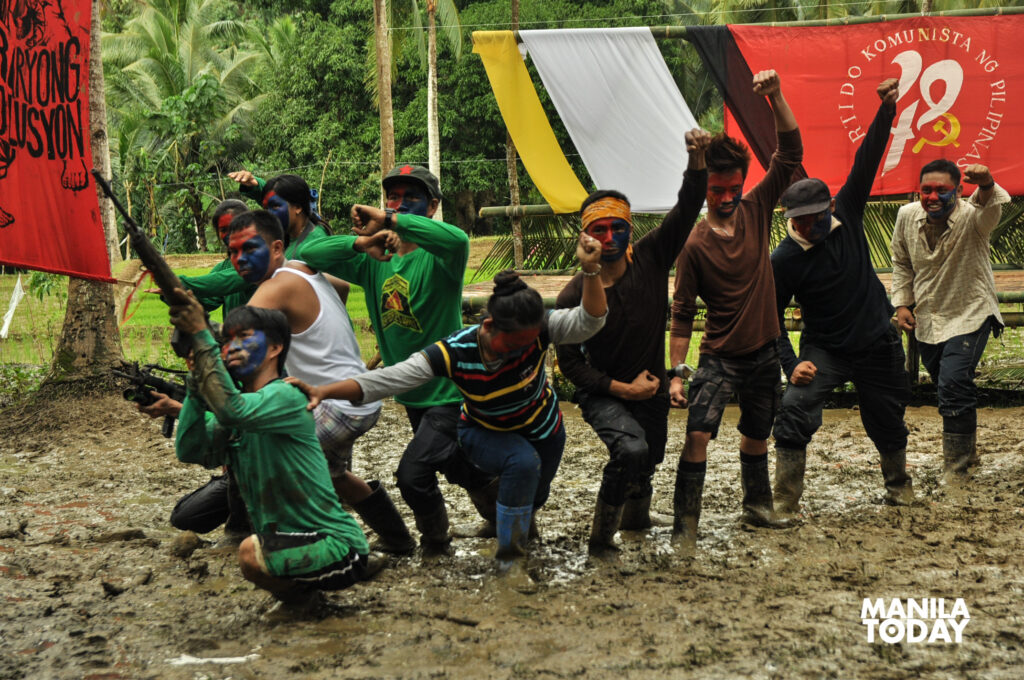
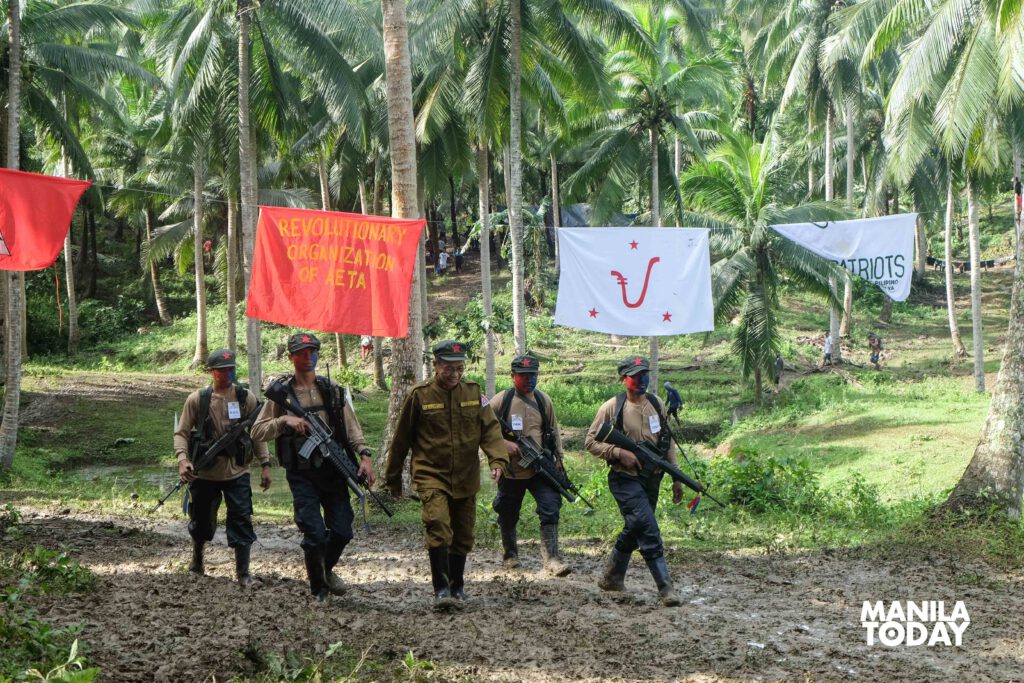
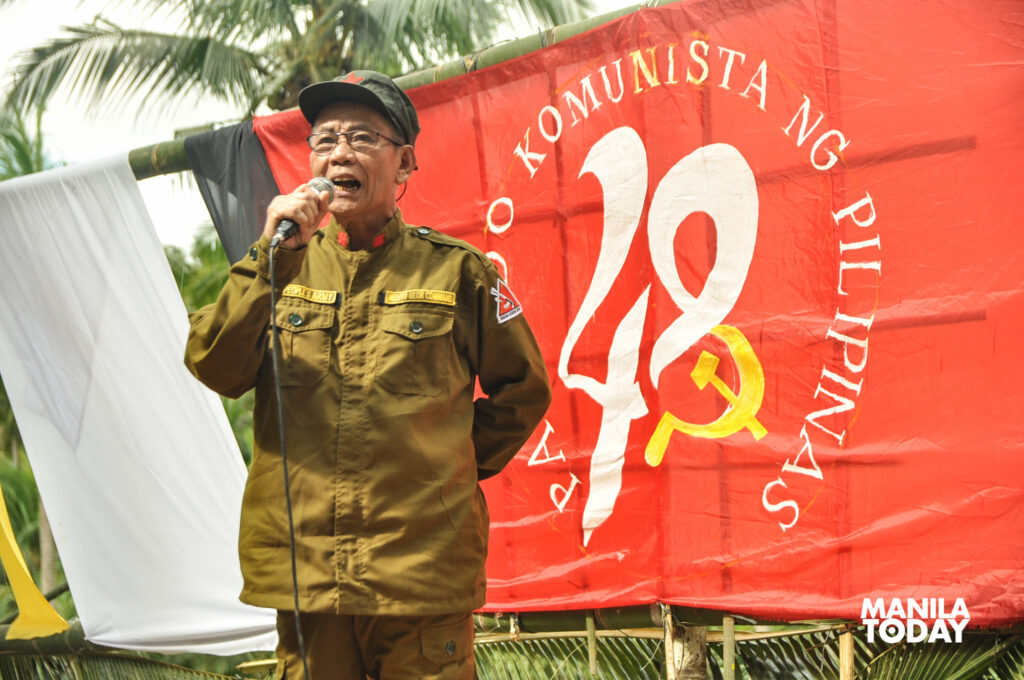
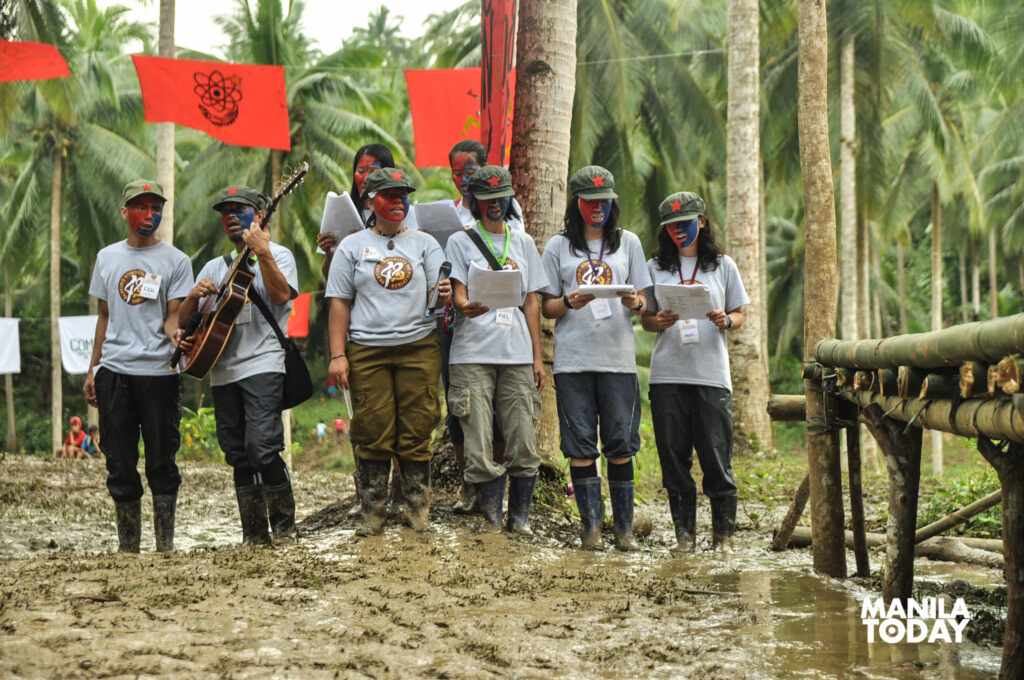
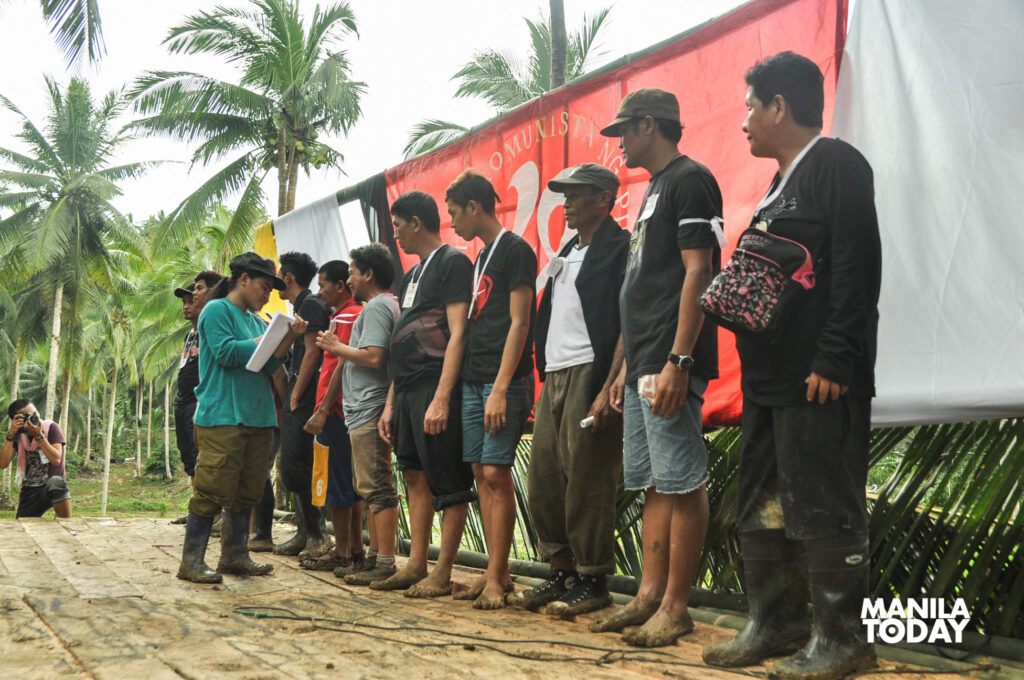


 Sa kabila ng pangako ni Pangulong Duterte at mga napirmahang mga pahayag ng GRP noong dalawang sesyon ng usapang pangkapayapaan na papalayain ang mahigit 400 na mga bilanggong pulitikal sa pamamagitan ng General Amnesty, wala pa ring napapalaya hanggang ngayon ng may kaugnayan sa usapang pangkapayapaan mula noong Agosto.
Sa kabila ng pangako ni Pangulong Duterte at mga napirmahang mga pahayag ng GRP noong dalawang sesyon ng usapang pangkapayapaan na papalayain ang mahigit 400 na mga bilanggong pulitikal sa pamamagitan ng General Amnesty, wala pa ring napapalaya hanggang ngayon ng may kaugnayan sa usapang pangkapayapaan mula noong Agosto. Nagtipon mahigit 1,000 mula sa iba’t ibang organisasyong masa at mga indibidwal sa tinaguriang National People’s Summit noong Hunyo 29 sa UP Film Center. Iprinesenta sa pagtitipon ang nabuong People’s Agenda para sa unang 100 araw ni Pangulong Rodrigo Duterte at ang 15 Puntong Programa para sa Makabayan at Progresibong Pagbabago.
Nagtipon mahigit 1,000 mula sa iba’t ibang organisasyong masa at mga indibidwal sa tinaguriang National People’s Summit noong Hunyo 29 sa UP Film Center. Iprinesenta sa pagtitipon ang nabuong People’s Agenda para sa unang 100 araw ni Pangulong Rodrigo Duterte at ang 15 Puntong Programa para sa Makabayan at Progresibong Pagbabago.

 Sa kauna-unahang pagkakataon, naglakbay at nagtipon sa Kamaynilaan ang umabot sa 3,000 katutubo at Moro mula sa Kordilyera hanggang Mindanao para buuin ang kanilang pagkakaisa at buuin ang alyansang Sandugo. Giit nila ang sariling pagpapasya para sa pambansang minorya bilang bahagi ng kailangang gawin upang makamit ang pangmatagalan at makatarungang kapayapaan.
Sa kauna-unahang pagkakataon, naglakbay at nagtipon sa Kamaynilaan ang umabot sa 3,000 katutubo at Moro mula sa Kordilyera hanggang Mindanao para buuin ang kanilang pagkakaisa at buuin ang alyansang Sandugo. Giit nila ang sariling pagpapasya para sa pambansang minorya bilang bahagi ng kailangang gawin upang makamit ang pangmatagalan at makatarungang kapayapaan. Pangunahing panawagan ng pagkilos ay ang pagtupad ni Duterte sa inihapag na People’s Agenda ng BAYAN at kaalyadong mga organisasyon at ipahayag ang suporta sa pagpapatuloy ng usapang pangkapayapaan sa pagitan ng GRP at NDFP.
Pangunahing panawagan ng pagkilos ay ang pagtupad ni Duterte sa inihapag na People’s Agenda ng BAYAN at kaalyadong mga organisasyon at ipahayag ang suporta sa pagpapatuloy ng usapang pangkapayapaan sa pagitan ng GRP at NDFP. Sa unang anibersaryo ng pagkamatay ni Leoncio “Ka Parago” Pitao, isang kumander ng Bagong Hukbong Bayan, nagmartsa sa lungsod ng Davao ang umabot sa 40,000 na mamamayan mula sa iba’t ibang bahagi ng Mindanao noong Hunyo 29 para suportahan ang muling pagbubukas ng usapang pangkapayapaan sa pagitan ng GRP at NDFP.
Sa unang anibersaryo ng pagkamatay ni Leoncio “Ka Parago” Pitao, isang kumander ng Bagong Hukbong Bayan, nagmartsa sa lungsod ng Davao ang umabot sa 40,000 na mamamayan mula sa iba’t ibang bahagi ng Mindanao noong Hunyo 29 para suportahan ang muling pagbubukas ng usapang pangkapayapaan sa pagitan ng GRP at NDFP.
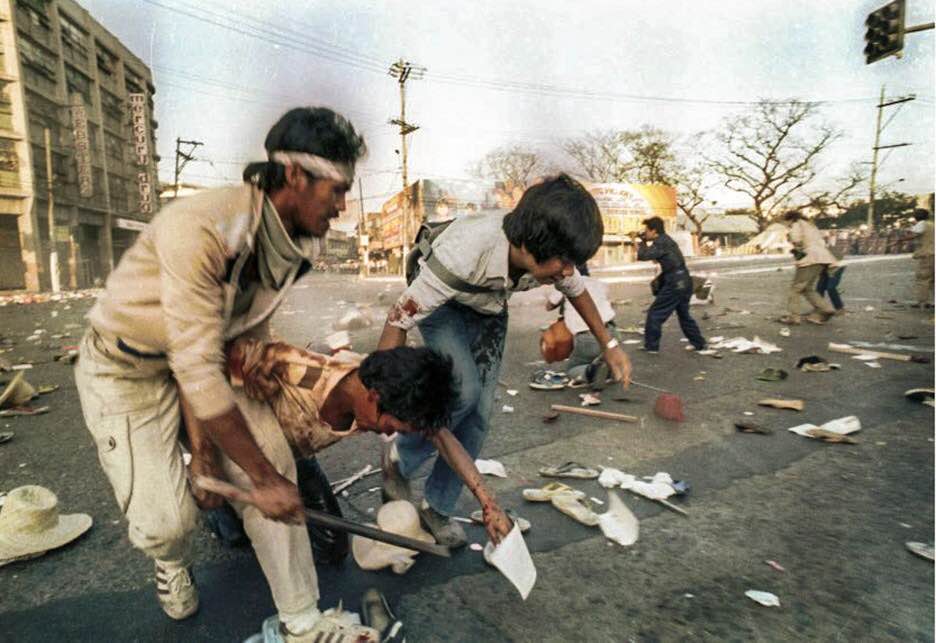
 Sa ilalim ng pamumuno ni Pangulong Rodrigo Duterte at sa pagpasok ng progresibong lider na Rafael Mariano sa Kagawaran ng Repormang Pansakahan, tumaas ang kumpyansa ng mga magsasaka na makakamit na nila ang hustisya sa naganap na masaker at mapapasakanila na ang lupang ipinangako. Ayon kay Mariano, mareresolba ang problema sa lupa at iba pang daing ng mga magsasaka ng Haciena Luisita sa loob ng tatlumpung araw noong Hulyo. Ipinatupad ni Mariano ang status quo order at isinama ang mga petisyon ng AMBALA sa kanyang resolusyon.
Sa ilalim ng pamumuno ni Pangulong Rodrigo Duterte at sa pagpasok ng progresibong lider na Rafael Mariano sa Kagawaran ng Repormang Pansakahan, tumaas ang kumpyansa ng mga magsasaka na makakamit na nila ang hustisya sa naganap na masaker at mapapasakanila na ang lupang ipinangako. Ayon kay Mariano, mareresolba ang problema sa lupa at iba pang daing ng mga magsasaka ng Haciena Luisita sa loob ng tatlumpung araw noong Hulyo. Ipinatupad ni Mariano ang status quo order at isinama ang mga petisyon ng AMBALA sa kanyang resolusyon. Hindi na bago ang isyu ng kontraktwalisasyon sa ating bansa. Maging kawalan ng maayos na benepisyo at kondisyon ng lugar ng trabaho hindi na rin bago sa mga manggagawa, bagamat hindi dapat at hindi makatao. Sa kabila ng iba’t-ibang mga petisyon at pagkilos ng mga unyon ay patuloy itong nilalabanan ng mga manggagawa, ngunit iniikutan ng mga kumpanya at binabalewala ng gobyerno.
Hindi na bago ang isyu ng kontraktwalisasyon sa ating bansa. Maging kawalan ng maayos na benepisyo at kondisyon ng lugar ng trabaho hindi na rin bago sa mga manggagawa, bagamat hindi dapat at hindi makatao. Sa kabila ng iba’t-ibang mga petisyon at pagkilos ng mga unyon ay patuloy itong nilalabanan ng mga manggagawa, ngunit iniikutan ng mga kumpanya at binabalewala ng gobyerno. Ngayong taon, bumisita ang mga pamilya ng biktima ng Ampatuan Massacre sa Sitio Malasay sa bayan ng Ampatuan kung saan nangyari ang trahedya. Nag-alay ng misa, kandila at mga bulaklak bilang pag-alala sa mga biktima. Sa tulong na National Union of Journalist of the Philippines at Justice Now Movement, na mga miyembro rin ang mga kaanak ng mga biktima, ay naisagawa ang komemorasyon.
Ngayong taon, bumisita ang mga pamilya ng biktima ng Ampatuan Massacre sa Sitio Malasay sa bayan ng Ampatuan kung saan nangyari ang trahedya. Nag-alay ng misa, kandila at mga bulaklak bilang pag-alala sa mga biktima. Sa tulong na National Union of Journalist of the Philippines at Justice Now Movement, na mga miyembro rin ang mga kaanak ng mga biktima, ay naisagawa ang komemorasyon.


 Nabuksan at nanariwa ang sugat ng Batas Militar sa taong ito, mula sa pagtakbo ni Bongbong Marcos, Jr. sa pagka-bise presidente at sa paglilibing kay Ferdinand Marcos, Sr. sa Libingan ng mga Bayani (LNMB).
Nabuksan at nanariwa ang sugat ng Batas Militar sa taong ito, mula sa pagtakbo ni Bongbong Marcos, Jr. sa pagka-bise presidente at sa paglilibing kay Ferdinand Marcos, Sr. sa Libingan ng mga Bayani (LNMB). Matagal na nating nakamit ang kalayaan mula sa mga kamay ng mga mananakop ngunit sa kasalukuyang sitwasyon ng ating bansa ay hawak pa rin tayo ng Estados Unidos (US). Isang patunay dito ang malagim na sinapit ni Jennifer Laude sa kamay ng isang US Marine na si Joseph Scott Pemberton. Si Pemberton ay nasa bansa para sa Visiting Forces Agreement (VFA) dalawang taon na ang nakakalipas.
Matagal na nating nakamit ang kalayaan mula sa mga kamay ng mga mananakop ngunit sa kasalukuyang sitwasyon ng ating bansa ay hawak pa rin tayo ng Estados Unidos (US). Isang patunay dito ang malagim na sinapit ni Jennifer Laude sa kamay ng isang US Marine na si Joseph Scott Pemberton. Si Pemberton ay nasa bansa para sa Visiting Forces Agreement (VFA) dalawang taon na ang nakakalipas. Natapos na’t lahat ang termino ni Aquino ay wala ring naibibigay na kapani-paniwalang paliwanag tungkol sa pagkamatay ng 65 na Pilipino sa isinagawang Oplan Exodus sa Mamasapano, Maguindanao, kung saan 44 ang miyembro ng Special Action Forces (SAF) ng Philippine National Police (PNP), 18 naman ang MILF at Bangsamoro Islamic Freedom Fighters at 3 sibilyan. Naging dahilan ito ng pagkakaudlot ng negosasyong pangkapayapaan ng gobyerno at ng Moro Islamic Liberation Front at pagkakabinbin ng pagpasa sa Bangsamoro Basic Law.
Natapos na’t lahat ang termino ni Aquino ay wala ring naibibigay na kapani-paniwalang paliwanag tungkol sa pagkamatay ng 65 na Pilipino sa isinagawang Oplan Exodus sa Mamasapano, Maguindanao, kung saan 44 ang miyembro ng Special Action Forces (SAF) ng Philippine National Police (PNP), 18 naman ang MILF at Bangsamoro Islamic Freedom Fighters at 3 sibilyan. Naging dahilan ito ng pagkakaudlot ng negosasyong pangkapayapaan ng gobyerno at ng Moro Islamic Liberation Front at pagkakabinbin ng pagpasa sa Bangsamoro Basic Law.



 Naging malaking usapin ang pagpapalaya sa mga bilanggong pulitikal sa loob ng anim na buwan sa pwesto si Duterte, lalo na sa pagtatapos ng taon kung makailang ulit na nangako si Duterte at mga opisyal ng administrasyon na palalayain ang mga bilanggong pulitikal bago sa Human Rights Day, bago mag-Pasko, bago matapos ang taon, at iba pa. Bago sana ang pangakong ito ng gobyerno, ngunit gaya ng maraming pagkakataong pagbibigay-hustisya sa mamamayan ay napako ito.
Naging malaking usapin ang pagpapalaya sa mga bilanggong pulitikal sa loob ng anim na buwan sa pwesto si Duterte, lalo na sa pagtatapos ng taon kung makailang ulit na nangako si Duterte at mga opisyal ng administrasyon na palalayain ang mga bilanggong pulitikal bago sa Human Rights Day, bago mag-Pasko, bago matapos ang taon, at iba pa. Bago sana ang pangakong ito ng gobyerno, ngunit gaya ng maraming pagkakataong pagbibigay-hustisya sa mamamayan ay napako ito.
 Tatlong taon na ang nakakalipas simula ng hagupitin ang bansa ng pinamalakas na bagyong naitala sa kasaysayan. Mahigit anim na libo ang namatay at nasa milyon ang ari-ariang nawala paglipas ng bagyong Yolanda. Dagdag pa rito ang trauma at hirap na dinaranas ng mga naiwang biktima.
Tatlong taon na ang nakakalipas simula ng hagupitin ang bansa ng pinamalakas na bagyong naitala sa kasaysayan. Mahigit anim na libo ang namatay at nasa milyon ang ari-ariang nawala paglipas ng bagyong Yolanda. Dagdag pa rito ang trauma at hirap na dinaranas ng mga naiwang biktima. Mula pa 2010 hinihintay ang pagkakaroon ng batas sa kalayaan sa impormasyon. Bahagi kasi ito ng mga ipinangako ni Noynoy Aquino sa pagtakbo sa pagkapangulo. Pero nang unang umupo si Aquino, hindi man lang nabanggit ang Freedom of Information (FOI) bill sa priority bills sa kahit anong State of the Nation Address ng dating pangulo. Hanggang sa huli ay ipinasa na niya lamang sa Kongreso ang responsibilidad. Sinabi pa ng pangulo na matapat naman ang kanyang administrasyon kaya’t hindi nakikita ang pangangailangan ng FOI.
Mula pa 2010 hinihintay ang pagkakaroon ng batas sa kalayaan sa impormasyon. Bahagi kasi ito ng mga ipinangako ni Noynoy Aquino sa pagtakbo sa pagkapangulo. Pero nang unang umupo si Aquino, hindi man lang nabanggit ang Freedom of Information (FOI) bill sa priority bills sa kahit anong State of the Nation Address ng dating pangulo. Hanggang sa huli ay ipinasa na niya lamang sa Kongreso ang responsibilidad. Sinabi pa ng pangulo na matapat naman ang kanyang administrasyon kaya’t hindi nakikita ang pangangailangan ng FOI.





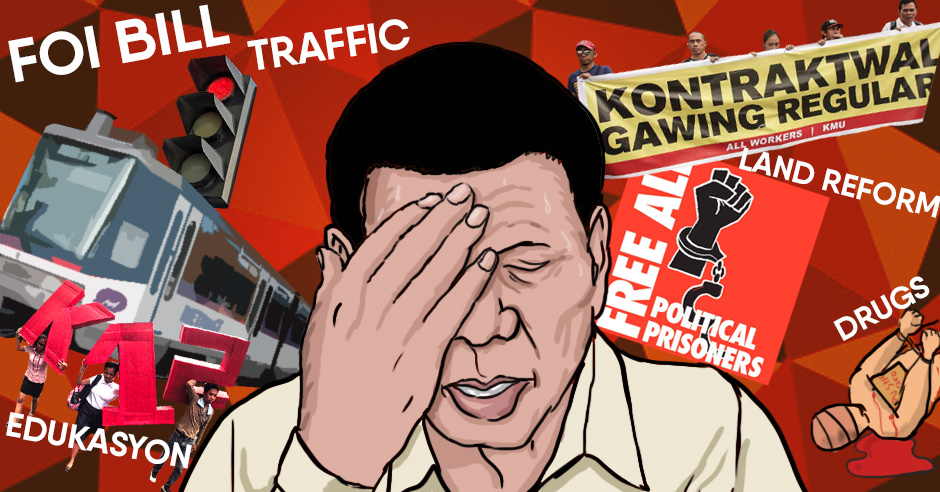


 Nagmistulang mabisang ulatan ng bayan ang social media sa kanilang mga reklamo hinggil sa bulok na mga pasilidad at sistema ng mass transport, partikular ang MRT at LRT. Nitong 2016, nagpatuloy ang paggamit ng mga naperwisyong mga mananakay ng MRT at LRT ang hashtag na #MRTBulok upang iparating sa kinauukulan, maging sa mga kapwa nila netizens ang mga usapin ng mahahabang pila, nasiraang bagon ng tren, hindi sumasarang mga pintuan ng tren, tumutulong tubig at maraming iba pa.
Nagmistulang mabisang ulatan ng bayan ang social media sa kanilang mga reklamo hinggil sa bulok na mga pasilidad at sistema ng mass transport, partikular ang MRT at LRT. Nitong 2016, nagpatuloy ang paggamit ng mga naperwisyong mga mananakay ng MRT at LRT ang hashtag na #MRTBulok upang iparating sa kinauukulan, maging sa mga kapwa nila netizens ang mga usapin ng mahahabang pila, nasiraang bagon ng tren, hindi sumasarang mga pintuan ng tren, tumutulong tubig at maraming iba pa. Hindi rin nagpahuli ang manggagawang Pilipino sa pagtutulak ng kanilang adbokasiya laban sa kontraktwalisasyon o “endo” sa larangan ng social media. Gamit ang hashtag na #EndContractualization, ipinahayag nila ang kanilang mga sentimyento at pagsingil sa nabibinbing pangako ni Pangulong Duterte na wawakasan nito ang “endo” sa unang anim na buwan ng kanyang panunungkulan.
Hindi rin nagpahuli ang manggagawang Pilipino sa pagtutulak ng kanilang adbokasiya laban sa kontraktwalisasyon o “endo” sa larangan ng social media. Gamit ang hashtag na #EndContractualization, ipinahayag nila ang kanilang mga sentimyento at pagsingil sa nabibinbing pangako ni Pangulong Duterte na wawakasan nito ang “endo” sa unang anim na buwan ng kanyang panunungkulan. Ang #TheChangeWeNeed ang hashtag na ipinantapat sa islogang “Change is Coming” na bitbit ng administrasyong Duterte sa kanyang pag-upo sa kapangyarihan. Nagsilbing daluyan ang hashtag na ito upang maiparating ng simpleng mamamayan ang kanilang mga nais na pagbabagong maramdaman sa loob ng anim na taong panunungkulan ng bagong gobyerno na nangako ng pagbabago.
Ang #TheChangeWeNeed ang hashtag na ipinantapat sa islogang “Change is Coming” na bitbit ng administrasyong Duterte sa kanyang pag-upo sa kapangyarihan. Nagsilbing daluyan ang hashtag na ito upang maiparating ng simpleng mamamayan ang kanilang mga nais na pagbabagong maramdaman sa loob ng anim na taong panunungkulan ng bagong gobyerno na nangako ng pagbabago. Upang gunitain ang Pandaigdigang Araw ng Karapatang Pantao para sa taong 2016 at ipanawagan ng grupong Karapatan ang pagpapalaya sa mahigit 400 na mga bilanggong pulitikal sa buong bansa, inilunsad at itinirik ang #FreeAllPoliticalPrisoners Solidarity Fasting Center sa paanan mismo ng Mendiola simula Disyembre 3-10. Layon nitong itulak ang administrasyong Duterte na tuparin ang ipinangako nitong pagpapalaya ng lahat ng mga bilanggong pulitikal.
Upang gunitain ang Pandaigdigang Araw ng Karapatang Pantao para sa taong 2016 at ipanawagan ng grupong Karapatan ang pagpapalaya sa mahigit 400 na mga bilanggong pulitikal sa buong bansa, inilunsad at itinirik ang #FreeAllPoliticalPrisoners Solidarity Fasting Center sa paanan mismo ng Mendiola simula Disyembre 3-10. Layon nitong itulak ang administrasyong Duterte na tuparin ang ipinangako nitong pagpapalaya ng lahat ng mga bilanggong pulitikal. Bigas ang hiningi ng gutom na mga magsasaka ng Kidapawan, ngunit bala ang ginanti sa kanila ng pamahalaan. Naglabasan ang maraming hashtag tugon sa usaping ito hanggang napag-isa ito sa #BigasHindiBala, matapos ang madugong dispersal sa kahabaan ng Cotabato-Davao Highway tanghali ng Abril 1, 2016. May 15,000 sako ng bigas ang matagal nang nakabinbing ibigay sa mga magsasakang ilang buwan nang biktima ng El Nino at nakararanas ng gutom. Kung kaya’t sila ay nagbarikada at nagprotesta upang igiit ang agarang pag-release ng relief goods na bigas.
Bigas ang hiningi ng gutom na mga magsasaka ng Kidapawan, ngunit bala ang ginanti sa kanila ng pamahalaan. Naglabasan ang maraming hashtag tugon sa usaping ito hanggang napag-isa ito sa #BigasHindiBala, matapos ang madugong dispersal sa kahabaan ng Cotabato-Davao Highway tanghali ng Abril 1, 2016. May 15,000 sako ng bigas ang matagal nang nakabinbing ibigay sa mga magsasakang ilang buwan nang biktima ng El Nino at nakararanas ng gutom. Kung kaya’t sila ay nagbarikada at nagprotesta upang igiit ang agarang pag-release ng relief goods na bigas. Oktubre 19, 2016 nang maganap marahas na dispersal sa pagkilos sa harapan ng US Embassy sa Maynila nang sagasaan ni PO3 Franklin Kho sa utos ni MPD Col. Marcelino Pedroso ang mga nagpoprotestang mga pambansang minorya na kasapi ng bagong tatag na alyansang Sandugo. Nasa ika-anim na araw noon ng #LakbayanPambansangMinorya nang maganap ang nasabing karahasan na lumikha ng ingay hindi lamang sa Pilipinas kundi maging sa labas ng bansa.
Oktubre 19, 2016 nang maganap marahas na dispersal sa pagkilos sa harapan ng US Embassy sa Maynila nang sagasaan ni PO3 Franklin Kho sa utos ni MPD Col. Marcelino Pedroso ang mga nagpoprotestang mga pambansang minorya na kasapi ng bagong tatag na alyansang Sandugo. Nasa ika-anim na araw noon ng #LakbayanPambansangMinorya nang maganap ang nasabing karahasan na lumikha ng ingay hindi lamang sa Pilipinas kundi maging sa labas ng bansa. Laman araw-araw ng mga balita ang kaliwa’t kanang patayan sa mga maralitang mga komunidad dahil sa “gera kontra droga” na pinasimulan ng gobyernong Duterte. Sa kasalukuyan, umaabot na sa halos 6,000 ang mga namamatay sa buong bansa.
Laman araw-araw ng mga balita ang kaliwa’t kanang patayan sa mga maralitang mga komunidad dahil sa “gera kontra droga” na pinasimulan ng gobyernong Duterte. Sa kasalukuyan, umaabot na sa halos 6,000 ang mga namamatay sa buong bansa. Naging maingay ang huling bahagi ng 2016 dahil sa pagbabasura ng Korte Suprema sa mga petisyon laban sa paglilibing kay dating Pangulong Ferdinand Marcos sa Libingan ng mga Bayani (LNMB).
Naging maingay ang huling bahagi ng 2016 dahil sa pagbabasura ng Korte Suprema sa mga petisyon laban sa paglilibing kay dating Pangulong Ferdinand Marcos sa Libingan ng mga Bayani (LNMB). Nagsimula ang #CHexit sa isang protestang pinangunahan ng Bayan Metro Manila sa harapan ng konsulado ng Tsina sa Lungsod ng Makati noong Hulyo 11, 2016. Isinunod ang nasabing hashtag sa #Brexit o ang pagkalas ng Great Britain sa European Union na nangyari at sumikat sa buong mundo bago lang muling uminit ang usapin sa panghihimasok ng Tsina sa teritoryo ng Pilipinas.
Nagsimula ang #CHexit sa isang protestang pinangunahan ng Bayan Metro Manila sa harapan ng konsulado ng Tsina sa Lungsod ng Makati noong Hulyo 11, 2016. Isinunod ang nasabing hashtag sa #Brexit o ang pagkalas ng Great Britain sa European Union na nangyari at sumikat sa buong mundo bago lang muling uminit ang usapin sa panghihimasok ng Tsina sa teritoryo ng Pilipinas. Pinakatampok na hashtag ngayong taon ang #JustPeace at ilang mga katulad na mga hashtags patungkol sa kampanya hinggil sa makatarungan at pangmatagalang kapayapaan at usapang pangkapayapaan sa pagitan ng GRP at NDFP pagkapasok na pagkapasok pa lamang ng administrasyong Duterte. Kabilang sa mga kampanyang ito ay ang #JuanForPeace, #ActforPeace, #JustPeacePH at iba pa.
Pinakatampok na hashtag ngayong taon ang #JustPeace at ilang mga katulad na mga hashtags patungkol sa kampanya hinggil sa makatarungan at pangmatagalang kapayapaan at usapang pangkapayapaan sa pagitan ng GRP at NDFP pagkapasok na pagkapasok pa lamang ng administrasyong Duterte. Kabilang sa mga kampanyang ito ay ang #JuanForPeace, #ActforPeace, #JustPeacePH at iba pa.









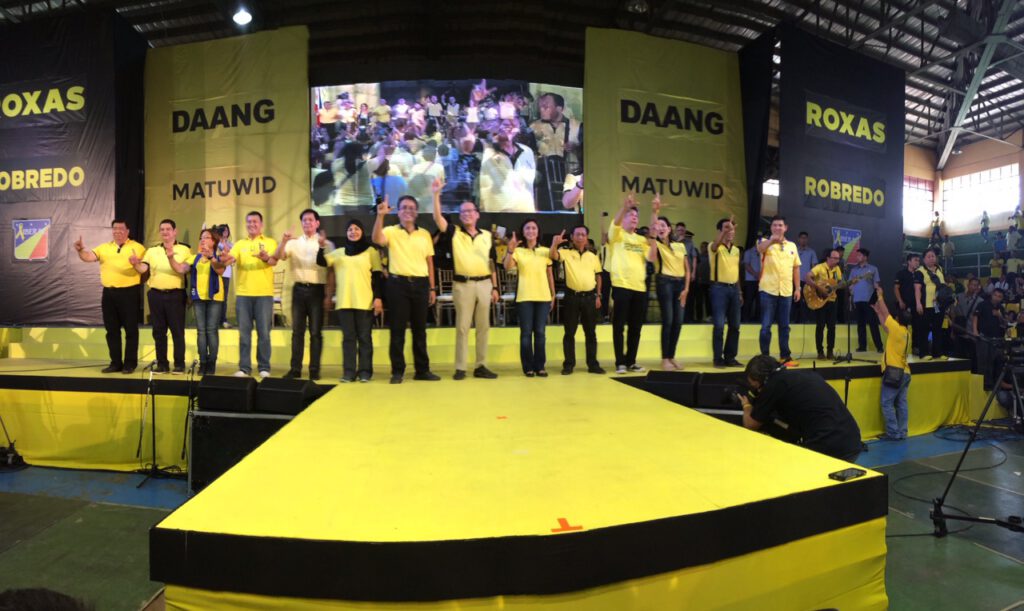

 The prolonged dry season caused by El Niño has exacerbated incidences of hunger, poverty, and deprivation in the countryside. Farmers and other food producers in Mindanao were seeking the urgent release of calamity funds but their desperate pleading was dismissed by bureaucratic gobbledygook and state brutality. The Philippines is vulnerable to the harsh impact of climate change but the situation is made worse by extreme poverty and inequality, bad governance, and environment plunder. Meanwhile, tropical storms wrought havoc in the Bicol region during the last quarter of the year.
The prolonged dry season caused by El Niño has exacerbated incidences of hunger, poverty, and deprivation in the countryside. Farmers and other food producers in Mindanao were seeking the urgent release of calamity funds but their desperate pleading was dismissed by bureaucratic gobbledygook and state brutality. The Philippines is vulnerable to the harsh impact of climate change but the situation is made worse by extreme poverty and inequality, bad governance, and environment plunder. Meanwhile, tropical storms wrought havoc in the Bicol region during the last quarter of the year. Despite the obvious unpreparedness of the education department, the senior high school (SHS) component of K-12 (it should have been named ‘TESDA in High School’) was implemented last June. The number of drop-outs was high even if this was denied by authorities, learning modules were inadequate or inaccurate, and many college teachers in private schools lost their jobs. But the corporate sector found K-12 as a lucrative potential, with tuition in SHS as high or double the rates in college. In addition, the K-12 curriculum directly promotes the labor export policy which would negatively affect the country’s human capital in the succeeding years.
Despite the obvious unpreparedness of the education department, the senior high school (SHS) component of K-12 (it should have been named ‘TESDA in High School’) was implemented last June. The number of drop-outs was high even if this was denied by authorities, learning modules were inadequate or inaccurate, and many college teachers in private schools lost their jobs. But the corporate sector found K-12 as a lucrative potential, with tuition in SHS as high or double the rates in college. In addition, the K-12 curriculum directly promotes the labor export policy which would negatively affect the country’s human capital in the succeeding years.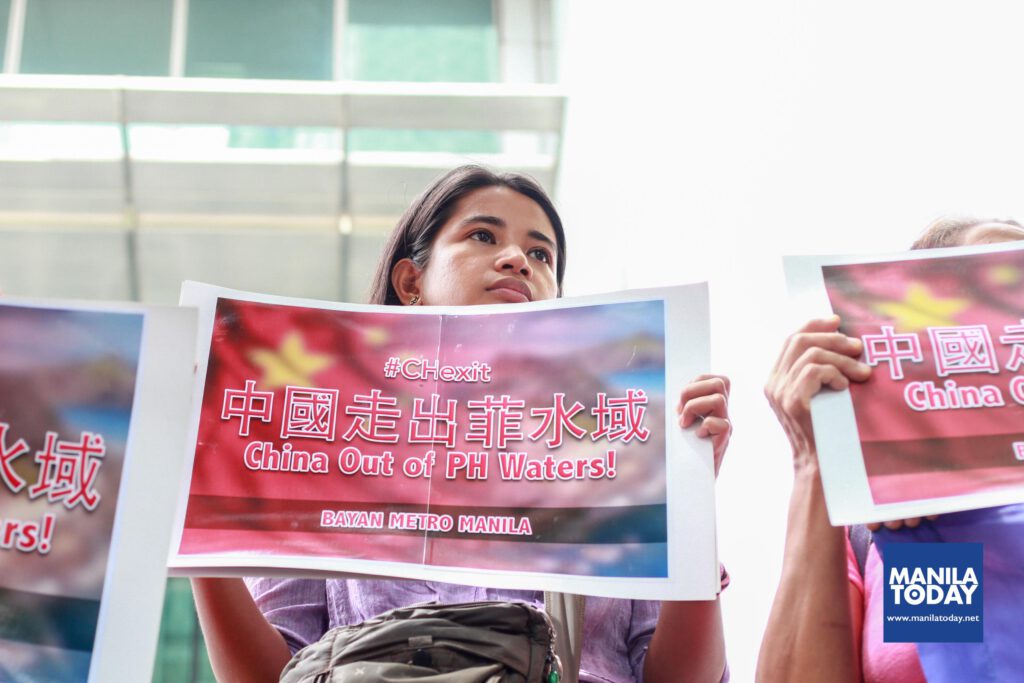 China’s bully behavior in the West Philippine Sea was officially recorded in the proceedings of The Permanent Court of Arbitration. The legal victory of the Philippines is part of the continuing struggle of the Filipino people to assert our sovereignty in our lands and territorial waters. Duterte eventually adopted a different strategy in dealing with China but it should not invalidate or undermine the historic significance of the PCA ruling.
China’s bully behavior in the West Philippine Sea was officially recorded in the proceedings of The Permanent Court of Arbitration. The legal victory of the Philippines is part of the continuing struggle of the Filipino people to assert our sovereignty in our lands and territorial waters. Duterte eventually adopted a different strategy in dealing with China but it should not invalidate or undermine the historic significance of the PCA ruling.

 There were moments in 2016 when some aspects of neoliberalism became part of mainstream political agenda. During the campaign period, presidential candidates were unanimous in criticizing the dehumanizing features of the contractualization (Endo) labor practice. When he assumed the presidency, Duterte reaffirmed his commitment to end Endo. Duterte also vowed to dismantle the reign of oligarchs. But Duterte’s economic advisers turned out to be fanatical followers of neoliberalism as they espoused the continuation of PPP, the adoption of a win-win formula (read: pro-business) on contractualization, the planned imposition of higher regressive taxes, and the refusal to hike pension and minimum wages. Duterte’s support base among the poor will weaken if his macroeconomic policies will continue to be biased in favor of the elite and big foreign business.
There were moments in 2016 when some aspects of neoliberalism became part of mainstream political agenda. During the campaign period, presidential candidates were unanimous in criticizing the dehumanizing features of the contractualization (Endo) labor practice. When he assumed the presidency, Duterte reaffirmed his commitment to end Endo. Duterte also vowed to dismantle the reign of oligarchs. But Duterte’s economic advisers turned out to be fanatical followers of neoliberalism as they espoused the continuation of PPP, the adoption of a win-win formula (read: pro-business) on contractualization, the planned imposition of higher regressive taxes, and the refusal to hike pension and minimum wages. Duterte’s support base among the poor will weaken if his macroeconomic policies will continue to be biased in favor of the elite and big foreign business.

 His victory confounded and disturbed many people especially immigrants, people of color, and the LGBT community. A conservative leader accused of promoting racist and misogynist views. Despite his image as a corporate tycoon, he was able to gather the support of ordinary voters who felt that the system is not working for them. What will happen once Trump becomes President Trump this month? How will a Trump presidency maintain American hegemony in world affairs? Will he openly support the alleged plot to oust Duterte? Will he deport migrants and foreigners from the US, 3.4M of them Filipinos, and expose the insolvency of the American dream?
His victory confounded and disturbed many people especially immigrants, people of color, and the LGBT community. A conservative leader accused of promoting racist and misogynist views. Despite his image as a corporate tycoon, he was able to gather the support of ordinary voters who felt that the system is not working for them. What will happen once Trump becomes President Trump this month? How will a Trump presidency maintain American hegemony in world affairs? Will he openly support the alleged plot to oust Duterte? Will he deport migrants and foreigners from the US, 3.4M of them Filipinos, and expose the insolvency of the American dream?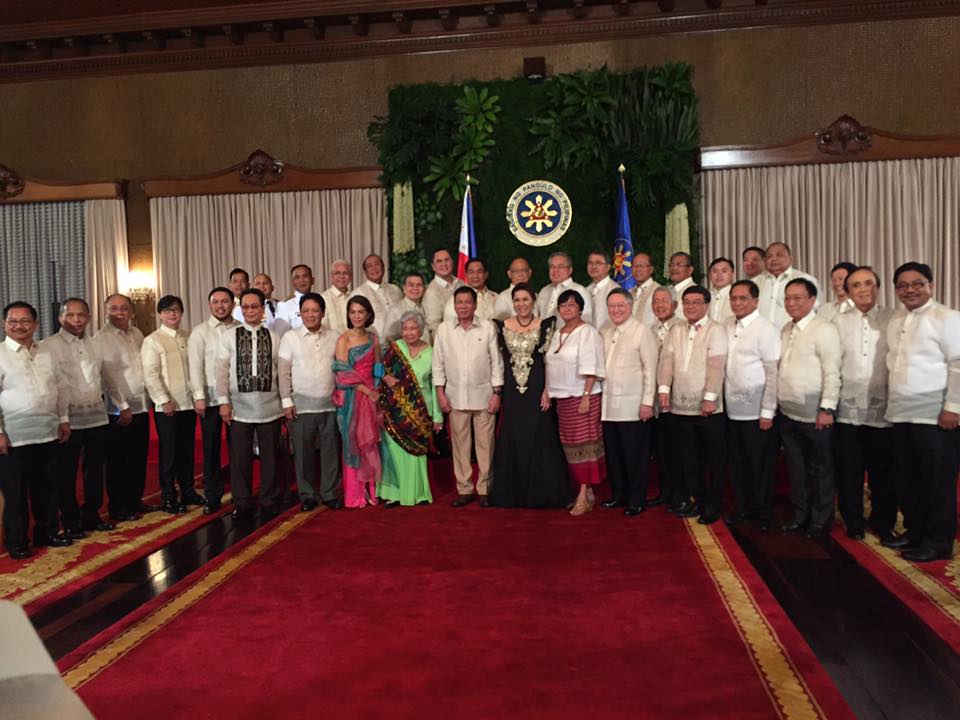
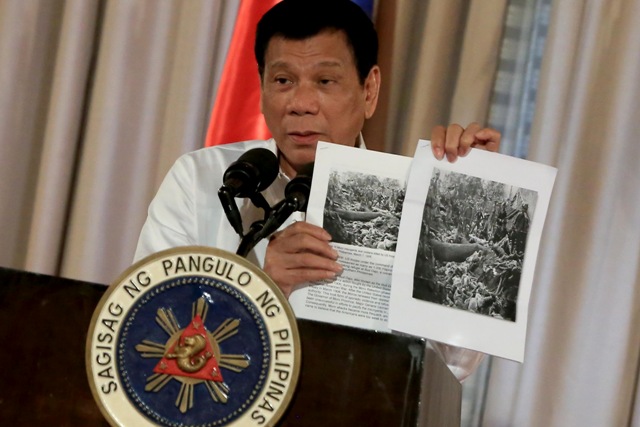


 Is it really free? Is it really for all? The details of this landmark policy will continue to be debated this year. Stakeholders are not yet finished in determining the applicability of this policy in schools across the country. But a big obstacle was breached in the fight for a free tertiary education. Lawmakers and education officials, reared in the neoliberal school of thought which disavows the giving away of subsidies, have finally articulated the relevance of providing free tuition to college students.
Is it really free? Is it really for all? The details of this landmark policy will continue to be debated this year. Stakeholders are not yet finished in determining the applicability of this policy in schools across the country. But a big obstacle was breached in the fight for a free tertiary education. Lawmakers and education officials, reared in the neoliberal school of thought which disavows the giving away of subsidies, have finally articulated the relevance of providing free tuition to college students.






 And to say that there have not been artistically excellent films and even politically engaged ones in the MMFF in the past would be a falsehood or a failure of memory. The MMFF, while in many years have been the wagon for cash cows, have given us Ganito Kami Noon, Paano Kayo Ngayon (1976), Insiang (1976), Minsa’y Isang Gamu-gamo (1976), Burlesk Queen (1977), Atsay (1978), Rubia Servios (1978), Bona (1980), Brutal (1980), the original Ang Panday (1980), Kisapmata (1981), Himala (1982), Karnal (1983), Bulaklak sa City Jail (1984), Ano ang Kulay ng Mukha ng Diyos (1985), Andrea, Paano Ba Maging Isang Ina? (1990), Ang Totoong Buhay ni Pacita M. (1991), Jose Rizal (1998), Muro-Ami (1999), Markova: Comfort Gay (2000), Bagong Buwan (2001), Dekada ’70 (2002), Crying Ladies (2003), Blue Moon (2005), Zsa Zsa Zaturnnah Ze Moveeh (2006), Dayo sa Mundo ng Elementalia (2008), Rosario (2010), Manila Kingpin (2011), Thy Womb (2012), Bonifacio: Ang Unang Pangulo (2014), Honor Thy Father (2015) and many more.
And to say that there have not been artistically excellent films and even politically engaged ones in the MMFF in the past would be a falsehood or a failure of memory. The MMFF, while in many years have been the wagon for cash cows, have given us Ganito Kami Noon, Paano Kayo Ngayon (1976), Insiang (1976), Minsa’y Isang Gamu-gamo (1976), Burlesk Queen (1977), Atsay (1978), Rubia Servios (1978), Bona (1980), Brutal (1980), the original Ang Panday (1980), Kisapmata (1981), Himala (1982), Karnal (1983), Bulaklak sa City Jail (1984), Ano ang Kulay ng Mukha ng Diyos (1985), Andrea, Paano Ba Maging Isang Ina? (1990), Ang Totoong Buhay ni Pacita M. (1991), Jose Rizal (1998), Muro-Ami (1999), Markova: Comfort Gay (2000), Bagong Buwan (2001), Dekada ’70 (2002), Crying Ladies (2003), Blue Moon (2005), Zsa Zsa Zaturnnah Ze Moveeh (2006), Dayo sa Mundo ng Elementalia (2008), Rosario (2010), Manila Kingpin (2011), Thy Womb (2012), Bonifacio: Ang Unang Pangulo (2014), Honor Thy Father (2015) and many more.









 Along the same wave as the peace talks between the GRP and the NDF are the neglected state of more than 400 political prisoners in the country.
Along the same wave as the peace talks between the GRP and the NDF are the neglected state of more than 400 political prisoners in the country.
 Bright shades of red and purple assault the memories of a former comfort woman whose long-gone innocence filled the melancholic dilemma of a relevant past better off forgotten by the people who actually went through it. Tagyamon renders war trauma through a kaleidoscope of memorable images, making LOLA LOLENG not only a reminder to keep the relevant images at bay but also to pass it on to a millennial audience with a short, vicious attack of beauty and madness.
Bright shades of red and purple assault the memories of a former comfort woman whose long-gone innocence filled the melancholic dilemma of a relevant past better off forgotten by the people who actually went through it. Tagyamon renders war trauma through a kaleidoscope of memorable images, making LOLA LOLENG not only a reminder to keep the relevant images at bay but also to pass it on to a millennial audience with a short, vicious attack of beauty and madness. Cannes’ best actress announcement was the inciting incident to an assumed “poverty porn” flick that surpassed the expectations of a typical Brillante Mendoza, proving he has more tricks under his sleeve – like y’know, simplicity. Much has to be admired in this family drama, with a straightforward narrative, and narrative devices that echo both Alfred Hitchcock and Lino Brocka. Of course, the cherry on top is Jaclyn Jose, who proves her clamored “Jaclyn Jose acting” was all an exaggerated response to the power of her restraint.
Cannes’ best actress announcement was the inciting incident to an assumed “poverty porn” flick that surpassed the expectations of a typical Brillante Mendoza, proving he has more tricks under his sleeve – like y’know, simplicity. Much has to be admired in this family drama, with a straightforward narrative, and narrative devices that echo both Alfred Hitchcock and Lino Brocka. Of course, the cherry on top is Jaclyn Jose, who proves her clamored “Jaclyn Jose acting” was all an exaggerated response to the power of her restraint. Along with SUNDAY BEAUTY QUEEN, it’s the jewel crown on top of the diverse MMFF 2016. A stellar cast of Paolo Ballesteros, Christian Bables, Gladys Reyes, Joel Torre, Lou Veloso and Luis Alandy headline this bittersweet comedy drama penned with humane deftness by Rody Vera and rendered with the subtle provocations of Jun Lana. Along with SUNDAY BEAUTY QUEEN, DIE BEAUTIFUL is also this generation’s ultimate beauty contest film – unveiling the make-up, the witty punchlines and the sequined dresses to see the battered fighter beneath. The warrior is a kontesera, and vice versa.
Along with SUNDAY BEAUTY QUEEN, it’s the jewel crown on top of the diverse MMFF 2016. A stellar cast of Paolo Ballesteros, Christian Bables, Gladys Reyes, Joel Torre, Lou Veloso and Luis Alandy headline this bittersweet comedy drama penned with humane deftness by Rody Vera and rendered with the subtle provocations of Jun Lana. Along with SUNDAY BEAUTY QUEEN, DIE BEAUTIFUL is also this generation’s ultimate beauty contest film – unveiling the make-up, the witty punchlines and the sequined dresses to see the battered fighter beneath. The warrior is a kontesera, and vice versa. While Calma’s short film was released in 2015, ALINGAWNGAW revived interest in the Martial Law life during 2016’s most contradictory burial. With silent, haunting images of a radio, an empty house, a sinister game of patintero, of torture, dispersal and the silent worldweary visage of Alessandra de Rossi clearly on top form, ALINGANGAW is an elegantly brief but poignant look at “Bagong Lipunan”.
While Calma’s short film was released in 2015, ALINGAWNGAW revived interest in the Martial Law life during 2016’s most contradictory burial. With silent, haunting images of a radio, an empty house, a sinister game of patintero, of torture, dispersal and the silent worldweary visage of Alessandra de Rossi clearly on top form, ALINGANGAW is an elegantly brief but poignant look at “Bagong Lipunan”. Derrick Cabrido’s drama works as both a character study between the old and new generation and as a mythical exploration of tradition, youth, curiosity, regrets and art. Barbie Forteza is unafraid to stand toe-to-toe with the Nora Aunor and their dynamics sizzles as the film unfolds in such a languid, ethereal and dream-like fashion. As Tuos comes into conclusion, it poses more questions than answers, which directs its viewers to reflect on what they have just witnessed. (Review by Kayo Jolongbayan)
Derrick Cabrido’s drama works as both a character study between the old and new generation and as a mythical exploration of tradition, youth, curiosity, regrets and art. Barbie Forteza is unafraid to stand toe-to-toe with the Nora Aunor and their dynamics sizzles as the film unfolds in such a languid, ethereal and dream-like fashion. As Tuos comes into conclusion, it poses more questions than answers, which directs its viewers to reflect on what they have just witnessed. (Review by Kayo Jolongbayan) In Eduardo Roy Jr’s most daring film yet, he didn’t miss any opportunity to make his audience feel dirty, tensed and terrified in this suffocating yet raw melodrama. With Hasmine Killip and Ronwaldo Martin delivering some of the year’s best performances as the film’s central figures, this subtle yet hauntingly real drama is both provocative and poignant. With echoes of Bonnie and Clyde and The Graduate, Roy turns the murky reality into a vibrant yet rustic picture. (Review by Kayo Jolongbayan)
In Eduardo Roy Jr’s most daring film yet, he didn’t miss any opportunity to make his audience feel dirty, tensed and terrified in this suffocating yet raw melodrama. With Hasmine Killip and Ronwaldo Martin delivering some of the year’s best performances as the film’s central figures, this subtle yet hauntingly real drama is both provocative and poignant. With echoes of Bonnie and Clyde and The Graduate, Roy turns the murky reality into a vibrant yet rustic picture. (Review by Kayo Jolongbayan) It must be said that SUNDAY BEAUTY QUEEN is the real surprise movie of the year. Not only was it a moving portrait of Overseas Filipino Workers (OFWs), it was surprisingly the unconventional choice for the MMFF Best Picture. And it rightfully is the best of that bunch. By focusing on the leisurely Sunday Beauty Contests in Hong Kong, Villarama juxtaposes the colorful background of the contests to the drab realities of domestic helpers that are not too distant to Rory Quintos’ ANAK or Lamasan’s MILAN. But come to think of it, its illegitimate sister DIE BEAUTIFUL also manages to do the same, with the two films revealing the two faces of escapist entertainment and the miserable realities women and the LGBT experience both at home and outside of it.
It must be said that SUNDAY BEAUTY QUEEN is the real surprise movie of the year. Not only was it a moving portrait of Overseas Filipino Workers (OFWs), it was surprisingly the unconventional choice for the MMFF Best Picture. And it rightfully is the best of that bunch. By focusing on the leisurely Sunday Beauty Contests in Hong Kong, Villarama juxtaposes the colorful background of the contests to the drab realities of domestic helpers that are not too distant to Rory Quintos’ ANAK or Lamasan’s MILAN. But come to think of it, its illegitimate sister DIE BEAUTIFUL also manages to do the same, with the two films revealing the two faces of escapist entertainment and the miserable realities women and the LGBT experience both at home and outside of it. Another MMFF entry, the film showcases an incisive observation and powerful parody of one of the movie industry’s most common fare, the romcom or romantic comedy movies. It picked apart the romcom so well that audiences would see what they usually see in these movies, but seeing them with different eyes. And of course, a Eugene Domingo-starrer Chris Martinez-penned film is expectedly a showcase of the comedic and acting prowess of possibly the best comedienne of today, again, Eugene Domingo, and possibly the best writer of comedy, again, Chris Martinez. With true comedies a rarity and slapsticks a-plenty, it felt so good to be laughing again.
Another MMFF entry, the film showcases an incisive observation and powerful parody of one of the movie industry’s most common fare, the romcom or romantic comedy movies. It picked apart the romcom so well that audiences would see what they usually see in these movies, but seeing them with different eyes. And of course, a Eugene Domingo-starrer Chris Martinez-penned film is expectedly a showcase of the comedic and acting prowess of possibly the best comedienne of today, again, Eugene Domingo, and possibly the best writer of comedy, again, Chris Martinez. With true comedies a rarity and slapsticks a-plenty, it felt so good to be laughing again. While film audiences contended with the controversial theme and apparent message of the film, the handiwork of the master that is Erik Matti is undeniable and indelible as in his other recent acclaimed works On the Job (2013) and Honor Thy Father (2015). Deserving of its technical awards and in toto the directorial job on the film and its award, the MMFF entry was also a box office hit that was screened even long after the festival along with top-grosser Die Beautiful.
While film audiences contended with the controversial theme and apparent message of the film, the handiwork of the master that is Erik Matti is undeniable and indelible as in his other recent acclaimed works On the Job (2013) and Honor Thy Father (2015). Deserving of its technical awards and in toto the directorial job on the film and its award, the MMFF entry was also a box office hit that was screened even long after the festival along with top-grosser Die Beautiful. The only mainstream film in the list is what the LGBT would say a “winnur.” Sam Milby and Zanjoe Marudo play lovers in the film while Angel Locsin plays the ex-girlfriend of Sam and the third wheel, not truly a third party. The stereo-type-breaking, gender-bender film (scorned woman giving full respect and understanding for her ex and his new boy love) portrayed a tender, enduring homosexual relationship not unlike a heterosexual relationship and all its affections and troubles. What’s more, the film grossed more than P 100 million pesos in the box office. If only, and hopefully, the rights of the LGBT in our society would earn as much (or more) support.
The only mainstream film in the list is what the LGBT would say a “winnur.” Sam Milby and Zanjoe Marudo play lovers in the film while Angel Locsin plays the ex-girlfriend of Sam and the third wheel, not truly a third party. The stereo-type-breaking, gender-bender film (scorned woman giving full respect and understanding for her ex and his new boy love) portrayed a tender, enduring homosexual relationship not unlike a heterosexual relationship and all its affections and troubles. What’s more, the film grossed more than P 100 million pesos in the box office. If only, and hopefully, the rights of the LGBT in our society would earn as much (or more) support.













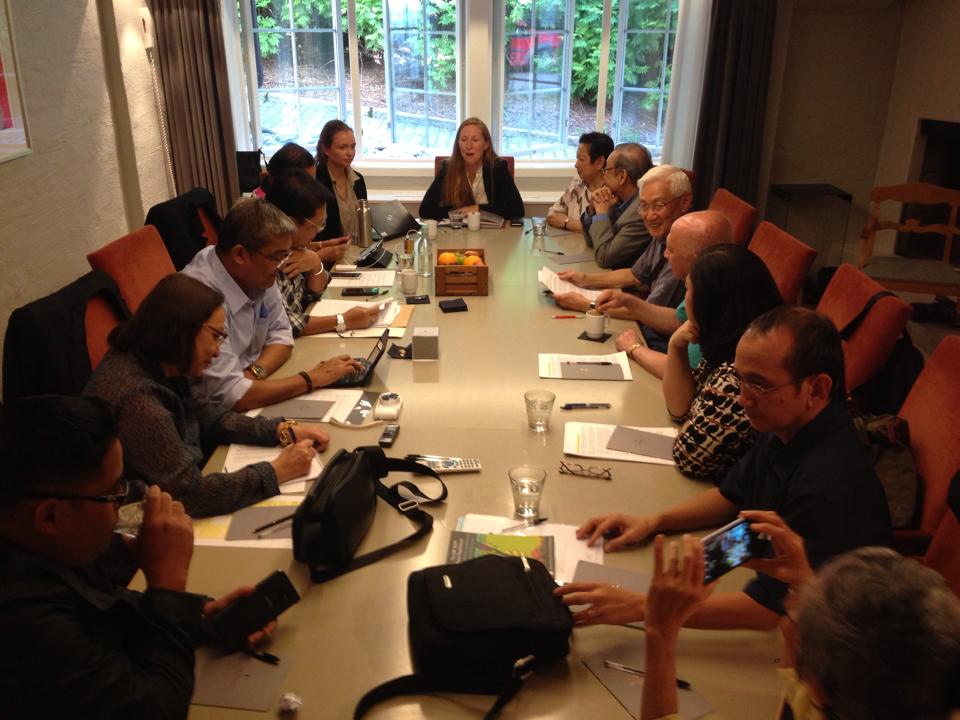






 After the death of the ailing nine-year detained, 66-year old peasant leader Bernabe Ocasla, Bello said that “The more than 400 political prisoners will be released in due time.”
After the death of the ailing nine-year detained, 66-year old peasant leader Bernabe Ocasla, Bello said that “The more than 400 political prisoners will be released in due time.”